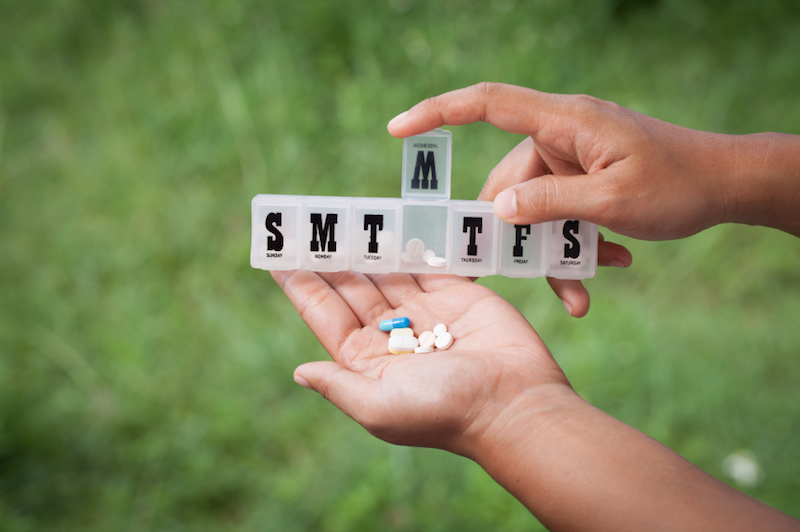
Studies show that seniors age 65 and over take an average of two to seven prescription medications each day. That accounts for more than 30 percent of all medications prescribed. With so many medications, often taken at different times, maintaining a consistent medication schedule can be a difficult task. The following tips will help you create a plan to ensure you take meds on time and avoid potentially dangerous mistakes.
Get Organized
Buy a pill organizer with enough compartments to accommodate your daily medications. If you need extra help remembering to take your medications, you can invest in an automatic pill dispenser that will notify you if you forget a dose. You can also ask your pharmacist to use pre-filled blister packs to group medications that are to be taken at the same time.
Timing is Everything
You can use your smartphone or watch to set alarms to remind you of medication times. It is also helpful to arrange dosages around daily activities. For example, you can plan to take evening medication when a particular television show comes on or at bedtime. You can also put medications in a place where you will be when they are due. For example, keep bedtime medications on your nightstand or in the bathroom near your toothbrush so you will have a visual reminder.
Color Code
If you have a long list of medications, you can use a color-coding system to help you keep on track. Mark the bottles of medications you take in the morning with one color, use another color for afternoon meds, and a third for evening meds. Mark a bottle with the appropriate combination of colors if the medication is taken two or three times a day.
Create a Medication List
An up-to-date medication list is critical for anyone taking multiple prescription medications. It will help you, your family, and medical professionals know exactly which medications you are taking. Creating a medication list is simple. You should gather up all prescription and over-the-counter medications and write down the following.
- The name of the drug
- The prescribed dosage
- How and when you are supposed to take the medication
- Why you are taking the medication
- The name of the prescriber
- A description of the medication, including shape, color, and any distinctive markings
- For temporary prescriptions, such as antibiotics, be sure to note the start date and when you are supposed to finish the medication
It is also helpful to include the cost of the drug, as well as who instructed you on how to use the medication.
You should take your current medication list with you to every doctor’s appointment. This will make sure your doctor has up-to-take records so that they can avoid potential drug-to-drug interactions. It is a good idea to keep a copy of the list in your wallet or with a close friend or family member in the event of an emergency.
Keeping track of multiple medications can be challenging, but a few minutes and a little organization can ensure you end up with a system that works.
There is no ads to display, Please add some


